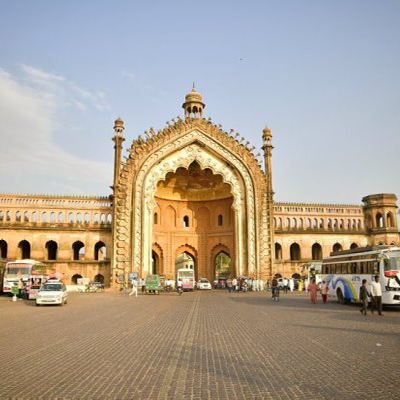
Exploring the Rich Tapestry of Lucknow: A Historical Journey
Lucknow, the capital city of Uttar Pradesh, India, is steeped in history and cultural splendour. From its ancient origins to its flourishing as a centre of art, culture, and administration, Lucknow's history unfolds like a captivating tale of resilience, grandeur, and diversity.
Ancient and Medieval Roots
Lucknow's history can be traced back to ancient times when it was known as Lakshmana Puri, named after Lord Lakshmana, the brother of Lord Rama from the Hindu epic Ramayana. Over the centuries, the region witnessed the rise and fall of several kingdoms, including the Maurya’s, Guptas, and later, the Delhi Sultanate and Mughal Empire.
Mughal Era and Nawabi Influence
Lucknow gained prominence during the Mughal period, particularly under the reign of Emperor Akbar, who established it as a strategic outpost. However, it was during the 18th century that Lucknow flourished as the capital of the Awadh region under the Nawabs (rulers) appointed by the Mughal Empire.
1. Nawab Asaf-ud-Daula: One of the most notable rulers of Lucknow was Nawab Asaf-ud-Daula (1775-1797), who transformed the city into a cultural and architectural marvel. He commissioned the construction of iconic landmarks such as the Bara Imam bara, Rumi Darwaza, and the Asafi Imambara (popularly known as the Lucknow Residency).
2. Cultural Renaissance: The Nawabi era marked a cultural renaissance in Lucknow, characterized by the flourishing of Urdu literature, poetry, music, and dance. The city became renowned for its gracious hospitality, elaborate feasts, and refined etiquettes, earning it the title of "Shiraz-i-Hind" (the Shiraz of India).
British Rule and Independence Movement
Lucknow played a significant role during the Indian Rebellion of 1857 against British colonial rule. The city became a center of resistance, and the iconic Siege of Lucknow unfolded at the Lucknow Residency. Though the British ultimately regained control, the event left an indelible mark on India's struggle for independence.
Post-Independence Development
After India gained independence in 1947, Lucknow continued to grow as an administrative, cultural, and educational hub. The city's architectural legacy and cultural heritage were preserved and celebrated, attracting visitors from around the world.
Modern-Day Lucknow
Today, Lucknow is a vibrant metropolis that blends its rich history with modern developments. It is renowned for its traditional Awadhi cuisine, particularly kebabs, biryanis, and sweets like the famous 'shahi tukda'. The city remains a center of art, culture, and education in Northern India, with institutions like the Lucknow University and various research organizations contributing to its intellectual landscape.
Conclusion
In conclusion, Lucknow's history is a saga of resilience, cultural refinement, and historical significance. From its ancient origins to its pivotal role in India's struggle for independence and its vibrant present-day culture, Lucknow continues to enchant visitors with its architectural marvels, culinary delights, and warm hospitality.